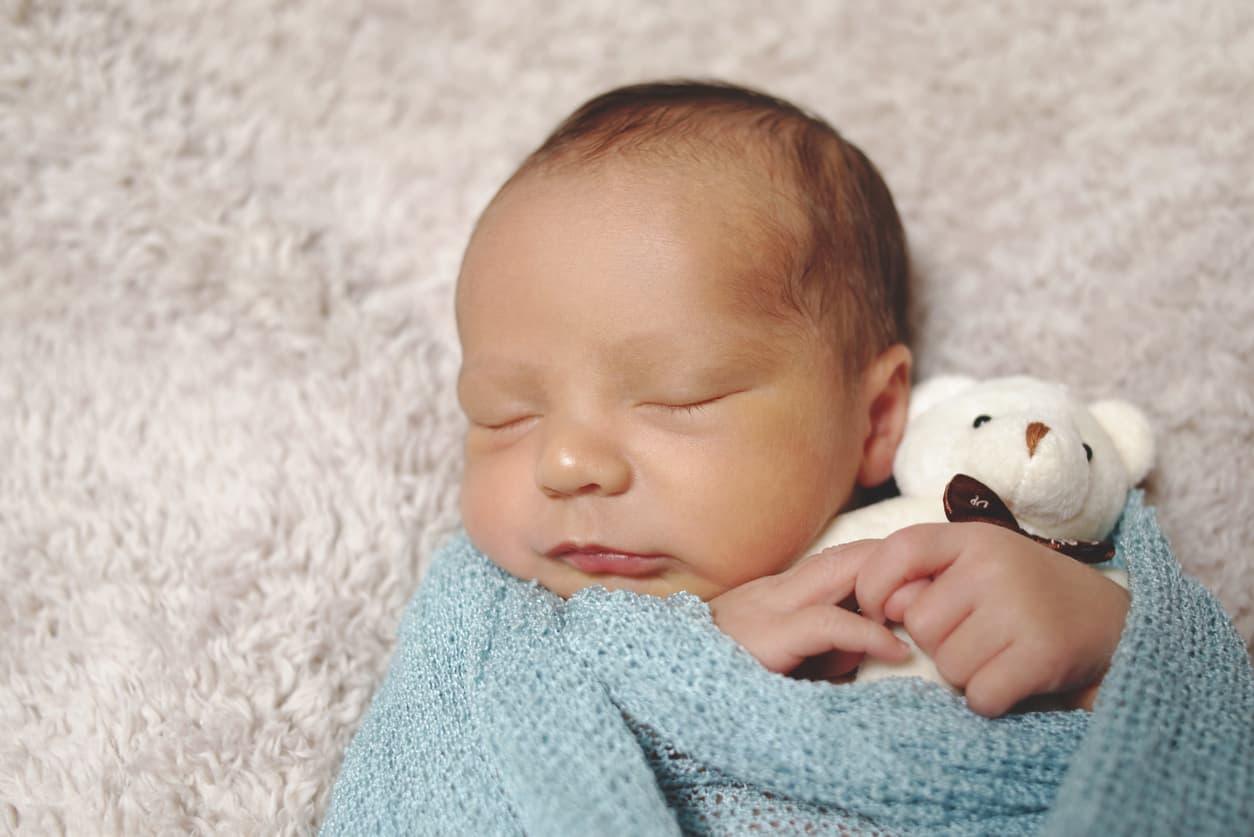Good night, sleep tight!
Nobody knows exactly where the expression came from. Some believe it referenced the ropes that held the mattresses in place in years gone by. Others follow the theory that “tight” was just a term for sleeping soundly.
At Sew Sweet Minky Designs, we like to think “sleep tight” refers to a great night’s sleep while wrapped snugly in a warm minky blanket. Remember those days? Now that baby’s here and you no longer have your own sleep schedule, it’s time to adjust to theirs. A baby sleep sack can help them feel more comfortable, translating into longer periods of sleep—for everyone.
What Is a Sleep Sack?
A sleep sack is like a tiny sleeping bag for your baby, but with holes for their arms and a snug but gentle neckhole. Its bell-shaped bottom allows for kicking and other leg movements, which are super important for proper development of muscles and hips.
The sleep sack provides the warmth of a blanket without the confinement of swaddling.
Benefits of a Baby Sleep Sack
Cozy footy pajamas are great, and a blanket is blissful when rocking your baby to sleep or holding them as they snooze, but a baby sleep sack can provide:
- Better sleep
- Fewer Moro reflex episodes
- Warmth, safety, and security
- Easy access for changing
Sleep sacks also make it a lot easier when grammy, grandpa, or any other caregiver steps in, making it easier for you to find sitters!
Sleep Sack 101
Before you rush out to buy a baby sleep sack for each day of the week, let’s go over some of the basics.
Sleep Sack Safety
No one wants to think about Sudden Infant Death Syndrome (SIDS), but baby sleep safety is a crucial topic for parents and other caregivers and must be discussed. You want to keep your wee one warm, but blankets should not be used while sleeping for at least their first year.
Sleep sacks are a safer alternative to blankets for newborns, but it’s crucial to select one that’s properly sized for your child.
Sleep Sack Dress Code
It’s common for babies to wear a onesie or footie pajamas under their sleep sack. Consider a long-sleeved fleece or other thick warm fabric for colder weather or short-sleeved cotton or linen for the warmer months.
The key is to make sure the sleep sack fits comfortably and correctly, without gaps or excessive squeezing. The sleep sack is all about movement.
Picking the Perfect Sleep Sack
Of course you want the best for your baby, so you want to make sure their sleep sack is just right. Some of the most important details to review are:
- Proper fit for their height and weight
- A properly sized neck opening to make sure it can’t slip off little shoulders
- A bell- or pear-shaped bottom for proper range of motion
- Use of a breathable fabric like cotton, muslin, flannel, linen, rayon, or fleece
- Ease of access
- A lack of sleeves, which can restrict movement
When to Use a Sleep Sack
How long should you use a sleep sack for your baby? Use either a sleep sack or nothing at all for the first year. After that? Just listen to them. They may not be able to communicate with words, but they can definitely tell you what works and what doesn’t.
After their first birthday, you can gauge the need for a sleep sack by your baby’s mobility, as well as their sleep quality. If they’re starting to roll over and are demonstrating strong mobility skills, you may be able to transition to a blanket.
Extra-large sleep sacks are available to fit the average 24-month-old, and toddler sleep sacks are also available. You can have custom sleep sacks made by your local seamstress to fit your child. It’s all about what helps them (and you) sleep the best.
If you try to get away from the sleep sack and it doesn’t work, no worries! Put them back in and try again when they’re a little bit older.
It may also help to start the change when temperatures are mild, so they can sleep comfortably with a light covering. The colds of winter or high AC in summer can make this transition more difficult than necessary.
How Many Sleep Sacks Do I Need?
Newborns and infants are doing a lot of developing and growing, so they sleep a lot. Also, in case you hadn’t heard, babies can be messy. You should have a minimum of three sleep sacks on hand, and having four to six sleep sacks can help you stretch out that laundry schedule so you don’t have to do it as often.
Sleep Sack Alternatives
When it is time to transition to a blanket, you should still make sure you size it appropriately. As you select the best blanket for your child, mimic the snug comfort of the sleep sack by making it as soft and cuddly as possible. Minky blankets are the pinnacle of sumptuous sleepy softness and comforting weight.
If your toddler is old enough, let them pick out their new blanket to make it even more special. Introducing a special blanket can be a great way to start the transition, then follow up by:
- Using just a top sheet during sleep
- Gradually choosing a lighter and lighter sleep sack until they fully transition out of one
Not sure if sleep sacks are still the right option? Check out our beautiful array of infant minky blankets today. At Sew Sweet, we offer heavenly softness for babies, toddlers, and kids of all ages.


Share:
12 Ways to Organize Blankets
How to Wash Blankets: Everything You Need to Know